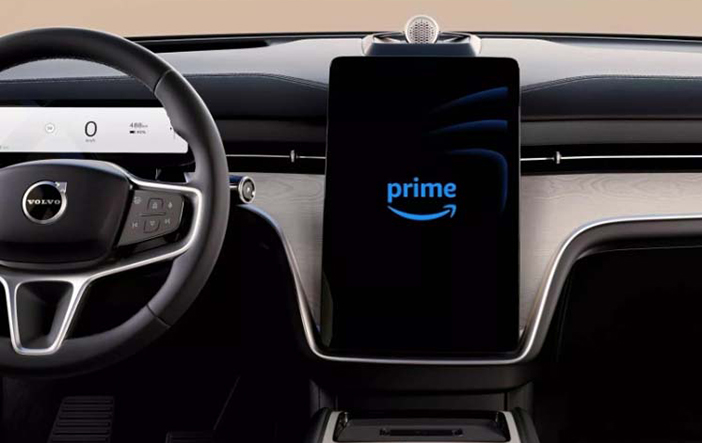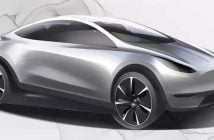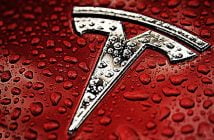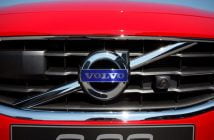+++ Incorrectly torqued nuts on cables leading to both the 12 volt and high voltage batteries in the plug-in hybrid variant of the ALFA ROMEO Tonale could lead to the risk of a fire whether the vehicle is on or off. Consequently, the manufacturer of this model recommends parking the vehicle outdoors until a recall repair is carried out. The problem may affect Tonales that were built between February 9 and August 23. Stellantis opened an investigation into this issue in August, after its Customer Experience team received a report from an assembly line worker at its Pomigliano Plant in Italy. The employee was checking the torque of nuts connecting the battery cables to the integrated dual charging module and found a cause for concern. The Customer Experience team reviewed production data, as well as torque traceability data, and met with engineering to understand the design and history of the part. It reasoned that nuts were incorrectly tightened because of the wireless screwdriver workers were using. On August 24, the plant issued a corrective update to the screwdriver so that it would tighten the nuts properly, and added results tracking to their manufacturing execution system to better account for how they were performing. That took care of the units built after that date, but the brands must now recall all of the Tonales made before that point in order to ensure that the loose cable connectors do not lead to a fire, which could currently happen whether the vehicles are on or off. As a result, Stellantis will begin contacting customers on October 27, requesting them to return their Tonale to a nearby dealership for a comprehensive inspection by a qualified mechanic. During this inspection, the integrated dual charging module will be thoroughly examined, and if needed, the nuts will be correctly torqued or replaced in case of complete detachment. So far, Stellantis is not aware of any injuries or deaths due to this issue, but has received 2 field reports of problems potentially related to it. It recommends that until a recall repair has been completed, that the Alfa Romeo Tonale should be parked outside to limit the risk that a fire spread to a building. +++
+++ BMW has confirmed that the company is working on an all-electric M3, set to be released in the next 4 years. The car is expected to sit on the Neue Klasse platform. The Vision Neue Klasse Concept that debuted at the Munich Motor Show provides a near-production look at the next-generation 3-Series, with the new M3 likely to take after that. BMW’s product development chief, Frank Weber, confirmed the German brand would release an all-new fully-electric M3. Those among you who are already angrily typing in dismay at such a prospect, you need not worry: BMW will also be offering a gas-powered variant as well. Yes, Weber confirmed that the M3 EV would be sold alongside an ICE version. The fossil-fuel-burning car will feature a new powerplant, likely based on the existing 6-cylinder S58, developed to be Euro 7-compliant. “We will not have 2 different classes. There will be co-existence of the solutions in the market, which is necessary”, said Weber. Back to the EV, the new battery-powered M3 could have the potential to offer up to a combined 1.341 hp of power from 4 individual electric motors. BMW has already previewed a quad-motor EV concept, with development continuing on a zero-emission i4-based and M3-faced prototype. The rolling testbed made an official appearance in 2022 and was caught by spies earlier this year. We know that the model is not destined for production, but what lies under the metal may just provide insight into what to expect from the next M3. Weber confirmed that the Neue Klasse platform could indeed handle up to 1.341 hp but wouldn’t be drawn into confirming whether the upcoming M3 EV would feature such a quad-motor drivetrain nor what kind of headline power figure it would eventually put out. Of course, if the M3 EV were to produce such numbers, it would blow any ICE variant clear out of the water. In its most powerful CS form, the current car can “only” muster 550 hp. However, I suspect the point of an ICE M3 would not be about the numbers alone, and rather about giving an option for those who would prefer to cling to the sounds and sensations delivered by internal combustion. Weber as much confirmed that the EV version will be lacking in the sound department but that the performance of the EV would make up for that shortcoming: “I can guarantee to you there might be something wrong with the engine sound if M customers still miss this, but definitely not how the car behaves. It’s incredible”. The BMW product development chief also spoke of how an electric architecture would enable drivers to have absolute control over the drivetrain. Part of that will include the option to explore rear-wheel-biased modes. The car will also be able to access each wheel’s individual controls, suggesting some extreme torque vectoring capabilities lie ahead. It’s all in search of providing “simply the highest and best performance” that customers of the M division demand. As for a timeline, Weber said it wouldn’t be far behind the launch of the first Neue Klasse model, which will take place in 2025. Weber set a tentative date for the next EV M3 at 2027. “We said we want to have it early and close to the SOP (start of production) of the core Neue Klasse model because exactly as you mean, people want to have what M can do best also in the battery-electric world”, he said. +++
+++ JAGUAR confirmed plans for an electric XJ in 2019 and prototypes were spied the following year. However, the model was eventually delayed before being killed altogether. It’s a complex tale but, in 2021, Jaguar Land Rover announced a Reimagine strategy focused on sustainability, modern luxury and a “positive societal impact”. As part of this effort, Jaguar will become an electric-only brand with a “dramatically beautiful new portfolio of emotionally engaging designs and pioneering next-generation technologies”. The company has already confirmed a 3 vehicle lineup, which will be headlined by a 4-door GT that will arrive in 2025 and have up to 700 km of range. The other 2 models were believed to be crossovers, but 1 of them is actually an “imposing limousine conceived in the mold of the XJ”. That being said, the model will reportedly look nothing like an XJ as it will adopt a “radically minimalist” design with a “low-slung silhouette defined by sharp surfacing and generous proportions”. The car is also said to have a long hood, slender lighting units, and a “non-functional grille-style structure that will come to be known as the new face of Jaguar”. Other reported highlights include 22-inch wheels and a ‘floating roof’ thanks to blacked out pillars. Much to the chagrin of traditionalists and common sense, the model is also said to eschew a rear window as Jaguar will reportedly rely on a digital rearview mirror like the Polestar 4. The bad news doesn’t end there as the leaper emblem will reportedly be replaced by “Jaguar” lettering. That would be the biggest change since the leaper hood ornament was phased out nearly two decades ago. Needless to say, the car sounds like a big gamble and that’s an apt word as the model is said to be roughly the same size as the old Bentley Mulsanne. The ultra-luxury sedan measured 5.575 mm long and had a wheelbase that spanned 3.266 mm. To put those numbers into perspective, the 2019 model year Jaguar XJ L measured 5.255 mm long and had a 3.157 mm wheelbase. The radical design will reportedly continue in the cabin, which is said to be devoid of physical controls other than the steering wheel. Instead, digital displays will rule the roost as there will be a digital instrument cluster, an infotainment system, and a smaller display on the center stack for climate and audio controls. The model is also said to have a rear seat entertainment system with two individual displays. The car will ride on the new Jaguar Electric Architecture and have a dual-motor all-wheel drive system with at least 456 hp It could have between 620 and 764 km of range. +++
+++ POLESTAR ’s range expansion is ramping up momentum, with offerings such as the ‘3’ (a big SUV) and ‘4’ (a medium size SUV Coupe) spearheading the Swedish automaker’s push into the premium EV space. Whilst the former 2 variants will do much of the heavy lifting in the sales charts, the ‘5’ will be the grand touring pinnacle for the luxury brand. Recently, journalists rode along in a Polestar 5 verification prototype, revealing some promising performance and handling insights. Yet what other goodies can we expect? Remember Polestar’s stunning Precept Concept from 2020? It was the precursor to the Polestar 5’s design, and in a show of rare form, the production car virtually mirrors the concept’s gorgeous styling. The differences? Those with a sharply trained eye will notice the suicide doors have made way for a conventional setup alongside changes to the charging port door and a new ventless hood. The body still wears that mammoth glass roof and finely tailored surfacing of the concept. However, tweaks have increased its curvaceousness below the shoulder line, and a deeper cutaway insert frames the lower sills and bumper. Fortunately, its ungainly Lidar unit appears flush (or it isn’t equipped on some variants). In a move that will surely ignite claustrophobia, it still lacks a rear window with outward visibility dependent on a digital video feed to the rearview mirror. An impressive stance, adjustments to the lower diffuser panel and tail lamp tweaks make for a well-proportioned sedan. The grand tourer will sport a minimalist 4-seat interior, emphasizing sustainable materials and Swedish opulence. Trim elements use 3D knit made from 100% recycled PET bottles and woven flax fibers. Tech goodies include a digital cockpit, Bowers & Wilkins audio, and a large touchscreen display powered by Android Automotive featuring over-the-air (OTA) updates. Deeper within, the Polestar 5 features an in-house developed bonded aluminum platform, which, as a byproduct, benefits everything from handling dynamics range to performance. Even its body-in-white (its basic structure and panels) is said to be lighter than vehicles from smaller classes. The fastest 5 that’s equipped with a dual-motor system will send 872 hp and 900 Nm to all 4 wheels, which is more than the Porsche Taycan at 761 hp in Turbo S guise, but still trails the tri-motor Tesla Model S Plaid’s colossal 1.020 hp. This dual-motor variant will easily slip under 3 seconds for the 0-100 km/h run. It will feature an 800 volt architecture enabling competitive fast charging and has a driving range above 483 km. An advanced Lidar system developed with Luminar will allow Level 3 autonomous driving capabilities in certain conditions. The Polestar 5 will compete against seriously brilliant competition in a ballooning EV segment. Rivals include Porsche’s Taycan, Audi e-Tron GT, BMW i7, Mercedes-Benz EQS, Cadillac Celestiq, Tesla Model S, Lucid Air and the new Lotus Emeya. Whilst the Polestar 5’s R&D was completed in the United Kingdom, production will be based at Geely’s new EV factory in Chongqing, China. An official reveal is tipped to occur in the coming months, with deliveries starting to roll out in spring 2024. As for pricing, it’s still too early to tell, but it’s expected to start from around €135.000 in the Netherlands. +++
+++ One of TESLA ’s biggest recent achievements was the Model Y, which is made using gigapresses that help reduce the complexity and cost of manufacturing. The next project for the automaker’s engineering team to push those savings further with presses that are even bigger. By building the Model Y with fewer, larger parts, Tesla managed to make it much cheaper to produce, improving its profit margins, and earning it a price advantage as legacy automakers rush into the EV segment. Such was the impressiveness of the process, that Toyota engineers recently called the crossover a “work of art”. Now, Tesla wants to take that a step further and make a massive section of its upcoming sub-$25,000 compact EV out of a single part, according to 5 anonymous sources. The strategy may rely on the use of machines that are even larger than the “gigapresses” Tesla currently uses in the Model Y. So, terapresses, perhaps. Whereas the tools that make the Model Y’s largest sections have between 6.000 and 9.000 tons of clamping pressure, these new ones could clamp down with as much as 16.000 tons of pressure to make even larger parts. Specifically, Tesla is exploring the possibility of making the entire underbody of its upcoming small vehicle (often referred to as the Model 2) out of a single piece, saving both time and money during the manufacturing process. By comparison, the equivalent portion of a conventional car is made up of about 400 pieces. However, Tesla has not yet made a final decision on whether to commit to the decision because of how difficult these tools are to get right. The larger the press, the more it costs to make, and while a new car is being designed, a company can go through several iterations of tooling as it irons out things as small as squeaks and rattles, or as big as structural flaws. Tesla believes it has found some of the solutions to these problems. Rather than testing complete presses, its suppliers have found ways to iterate using sand casts that cost a fraction of the price. Once everyone is happy with the part, the automaker can buy a press made of metal that it will actually use to produce vehicles. And Tesla may continue using sand once production begins, albeit not in the same way. One of the other reasons most automakers use multiple presses and hundreds of parts to make vehicle underbodies is because some sections are hollow. This not only makes them lighter, but can also be engineered to make vehicles safer. By using sand in the molds, Tesla has been working on large presses that can make underbodies with hollow sections. It has had to overcome obstacles to achieve that, though. For one, the alloys typically used in auto manufacturing don’t cool right when they have a big block of sand in them, changing the thermal properties of a mold. Again, the automaker turned to its suppliers to come up with new metal recipes that can cool with the 3D printed sand in them. However, it still cannot find a way to use this technique with its 16.000-ton terapress and must use a process that takes longer to complete. “Tesla could still choose high-pressure for productivity, or they could choose slow alloy injection for quality and versatility”, one of the sources told Reuters. “It’s still a coin toss at this point”. However it chooses to proceed, the new models will no doubt be dissected by other automakers to see if the results are works of art like the Model Y, and whether such an investment will pay off for them. +++
+++ TOYOTA has been recently criticized for the weak range of its EV models in tests, but the Japanese carmaker could be about to go from the back of the pack to the front. The company has confirmed that its next-generation battery tech will begin appearing in production cars in 2026 and that we can expect around 800 km between top-ups initially, and almost double that from later versions. Like other companies including Ford and Tesla, Toyota has opted to create different battery kinds to suit different applications, much like it currently builds combustion engines with a variety of different specs and power outputs. Initially, there will be 2: a Performance battery that uses li-ion tech for expensive cars, and a Popularisation battery employing lithium-iron-phosphate chemistry designed to keep entry-level EVs affordable. Toyota says the Performance battery will arrive first, hitting the road in 2026 when it will offer a 20 percent cost saving (to Toyota) versus the battery currently used in the BZ4X, 800 km of range and a 10-80 percent charge time of 20 minutes or less. Coming later in 2026, or possibly 2027, the cheaper LFP will up the cost saving to 40 percent, increase cruising range by 20 percent (but only to 600 km), and be able to charge from 10-80 percent in 30 minutes. Arriving in 2027-28 is a High-Performance li-ion battery that delivers a 10 percent cost saving over the first Performance battery. It takes the same 20 minutes to charge but promises over 1.000 km of range, though that figure is only achieved from a vehicle optimized for slippery airflow and low curb weight. And that’s not the end of it. Also coming in 2027-28 is Toyota’s first solid-state battery, which will also provide 1.000 km of range, but can be charged to 80 percent in only 10 minutes, while a further evolution coming through at some unspecified time in the future will extend an EV’s driving range to more than 1.200 km, and eventually to as much as 1.500 km. Toyota is also working to reduce the thickness of its battery packs to improve interior comfort for passengers and shrink overall vehicle heights to improve aerodynamics, further improving efficiency. It says the battery in the current BZ4X measures 150 mm including its casing, but that will drop to 120 mm for regular vehicles and 100 mm in sports cars. +++
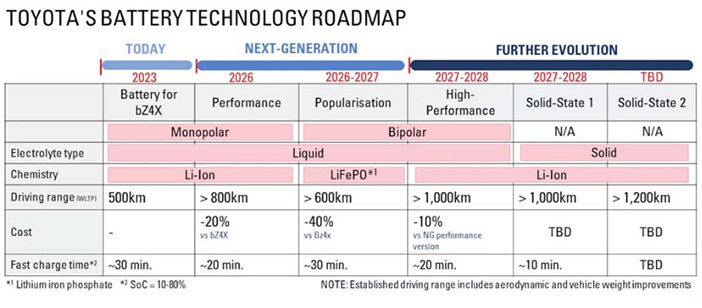
+++ The majority of the 11.300 electric vehicles sold by VINFAST in the first half of 2023 were bought up by a taxi company that is owned by VinGroup, the same corporation that controls the automaker, filings with the United States Securities and Exchange Commission (SEC) have revealed. More than 7.000 of the vehicles that VinFast sold in the first 6 months of 2023 were purchased by Green and Smart Mobility, a Vietnamese taxi company. All 3 companies are controlled by Pham Nhat Vuong, VinGroup’s former chairman. The disclosures paint a complicated picture of the VinFast’s business, but will no doubt be of interest to investors. According to Barron’s, the information was previously available as part of a filing from late July, but was re-published on Tuesday. Since trading on the NASDAQ stock exchange, VinFast’s stock has been highly volatile, becoming the third-most highly valued automaker on earth for a brief time, and prices have fluctuated wildly from highs of $93 per share down to $17.24 earlier this week. As more information is revealed about the automaker, such as the source of its vehicles’ buyers, and the fact that it is struggling to maintain its presence in the U.S., its value has risen and fallen quickly. One of the biggest factors in the stock’s roller coaster performance has simply been how many shares are available. Of the 2.3 billion outstanding VinFast shares, 1.2 billion are held by Vingroup. Another 1.1 billion are owned by Vietnam Investment Group and Asian Star, 2 investment entities owned by Vuong. That effectively means that the industrialist owns 99.7 percent of VinFast stock, leaving the rest subject to big swings in value. However, Tuesday’s filing with the SEC was made in order to allow another 11 million shares to be sold from existing shareholders, which may help smooth out some of the volatility. +++
+++ The electric Polestar 2 and a host of VOLVO models will soon receive Amazon Prime Video on their infotainment systems through an over-the-air update being introduced around the world. Polestar’s Tesla Model 3 rival was the first car on the market using Google’s Android Automotive OS when it launched in 2019 and it remains one of the best systems on the market. Most recently, this system was updated to include the YouTube app and is now receiving Amazon Prime Video. Importantly, the streaming service will only be accessible when the car is charging or parked. Prime Video joins a host of other apps already offered through the Polestar 2’s system, including Waze, EasyPark, AccuWeather, Range Assistant, Journey Log, and A Better Routeplanner. It’s safe to assume that Polestar’s upcoming models, like the 3 and 4, will both leave the factory with Prime Video installed. Volvo is following suit. The Swedish firm has confirmed that all of its models with Google built-in around the world, except those in China, South Korea and Vietnam, will receive YouTube as part of an over-the-air update while Prime Video will be available to download from Google Play. The over-the-air update will be rolled out gradually market by market from September 18. “Adding access to services such as Prime Video and YouTube in our cars bolsters the continuously growing list of software and applications to make lives for our drivers better,” Volvo Cars global head of new car program Erik Severinson said. “We are delivering on our promise of building cars that grow with our customers over time”. There’s plenty else to look forward to from Volvo. The company is hard at work on the all-electric EX90 and while it was recently delayed due to the complexity of its software, it represents an exciting new front for the brand’s EV future. +++
